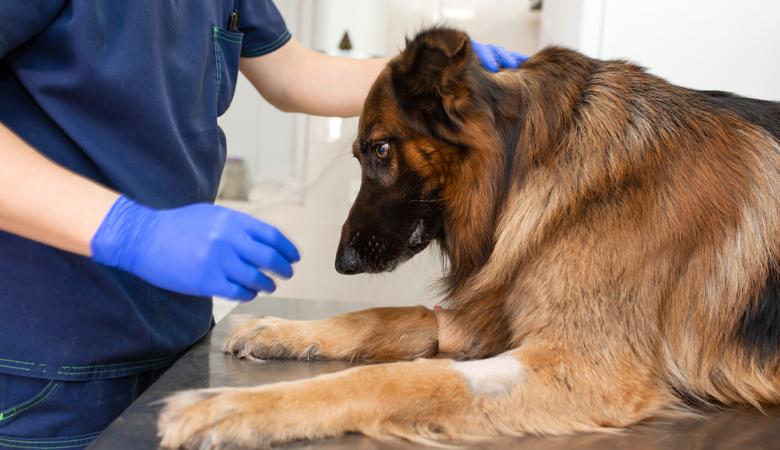Atopic dermatitis in dogs
Written by |
The skin is the largest organ in our body and in the body of our pets. Its main function is the defensive barrier, which protects the body against attacks from the outside. Atopic dermatitis (atopy) is the most common allergic condition in dogs. This involves an immune response against (harmless) substances in the environment, such as plant or tree pollen, weeds, powder and mites. This often has to do with a genetic predisposition.

Atopic dermatitis (atopy)
Atopic dermatitis or atopy refers to skin problems caused by allergic reactions to environmental allergens. Well-known allergens are grass pollen, pollen and house dust mites. Allergic reactions caused by plants and trees are generally seasonal and decrease as the allergens stop being released. When a dog with atopy comes into contact with an allergen, an immune response against this allergen develops. This reaction releases inflammatory products in the skin, such as histamine. This is intended to ward off the allergy-inducing substance, but unfortunately, it is this immune response that causes the symptoms. The skin is characterized by severe itching and redness often on specific parts of the body, such as the chin, between the toes and the underarm, abdomen and groin skin. In cats, the itching is mainly around the head, legs and abdomen. The cat often licks itself excessively because of the itching, which can cause bald spots.
Treatment of an atopic dermatitis
The best treatment for an allergy is of course preventing your animal from coming into contact with the allergy-inducing substance. Unfortunately, in many cases, it is difficult to find out exactly which substance your animal reacts to. In general, this is done in two steps. First, it is checked whether there is a food allergy. To find out, your vet will advise you to give your dog or cat a so-called elimination diet. Unfortunately, sometimes it takes a while to find the right food. If no food gives any improvement, research can be done to determine whether your animal has an allergic reaction to something in the environment and therefore has atopy. A blood test can be done for this. The blood is checked for antibodies against mites and pollen. Unfortunately, this does not always provide a clear picture, but it can give us a direction. However, it is often impossible to prevent your animal from coming into contact with the allergy-inducing substance, as these are often house dust mites or pollen from the environment. There is, however, the possibility of desensitizing your animal. During this treatment, your animal is injected multiple times with the allergen. We start with a very small amount and build this up over time. As a result, the body gets used to the allergy-inducing substance and this results in the reaction being less severe or disappearing entirely. This works in about 60-70% of the animals. In animals where this does not work, symptomatic treatment should be sought. In this case, agents are used that slightly inhibit the immune system so that the immune response to the allergen is less severe. The lowest possible dose is sought to limit the side effects of these types of drugs. In addition, you can support the skin with care products and nutrition .
Skin and coat care in atopic dermatitis
Recent studies have shown that atopic dogs also suffer from changes in the fatty acids (lipids) and protein levels in the stratum corneum. It has been proven that the skin of these dogs is affected and loses more water and therefore dries out and loses the skin barrier function. This makes it easier to develop secondary infections with bacteria and/or fungi. The use of shampoos with antiseptic and moisturizing properties and the regular application of essential fatty acids directly on the skin with, for example, the Allerderm-spot-on or the Dermoscent Essential 6 are useful to improve skin barrier function. High-quality nutrition is also essential to support the skin and coat. Several specialized diets are available to improve the skin and coat in animals. These types of diets often contain fish oil and are rich in essential fatty acids (omega 3 and omega 6). Products based on Borage or Primrose Oil are also rich in these fatty acids. The administration of food or supplements rich in essential fatty acids has been shown to help control allergy symptoms. Furthermore, there is also food for dogs on the market Derm defense that reduces the release of histamines, which can also decrease the itching symptoms.
Do you have a question for our vet about atopic dermatitis or skin and coat problems in dogs or cats in general? Please contact our vet on telephone 033 0818 0862 or mail address: veterinarian@vetsend.co.uk



